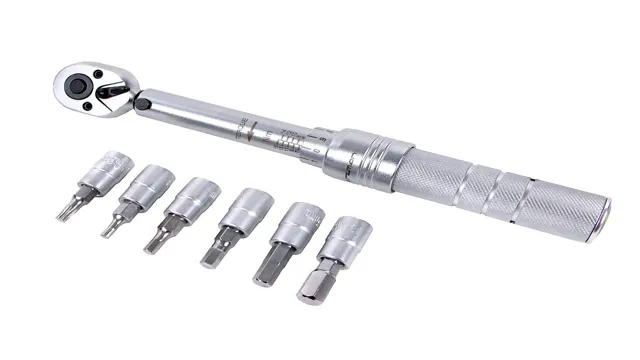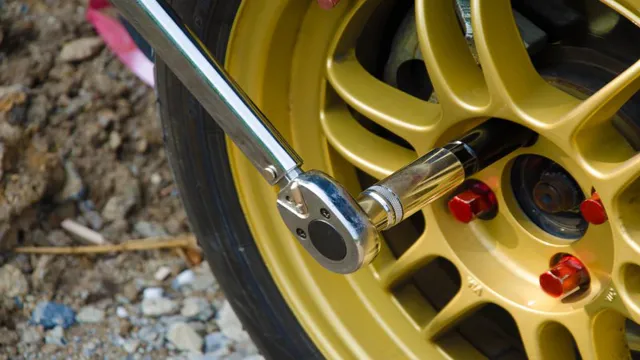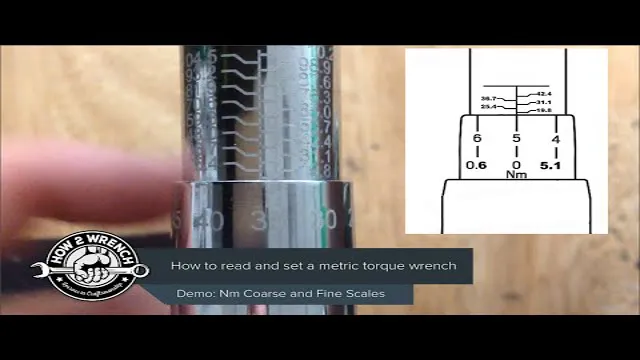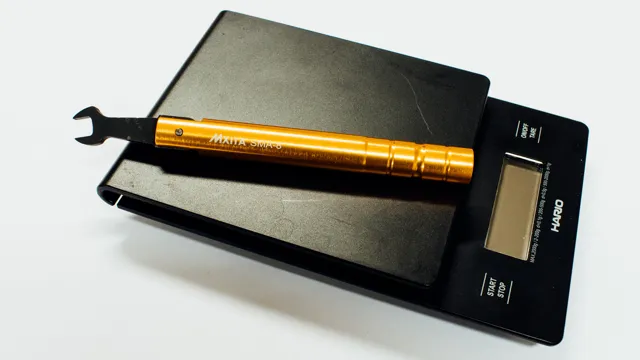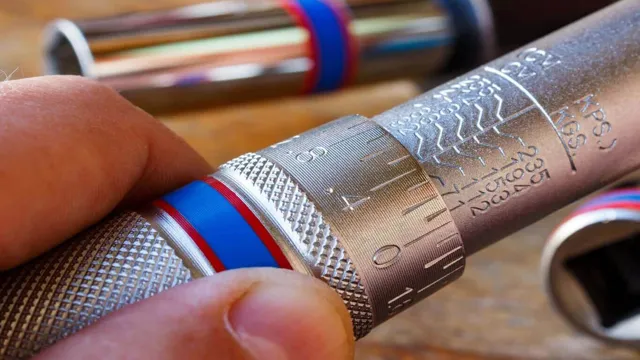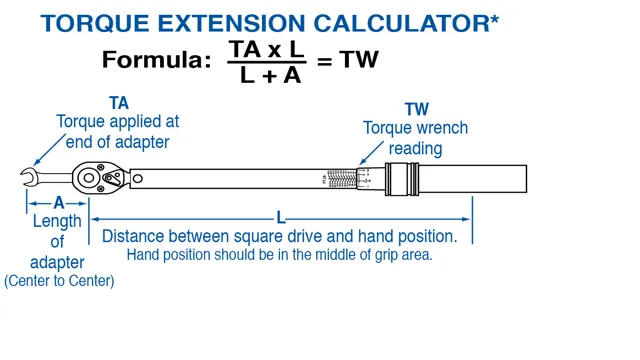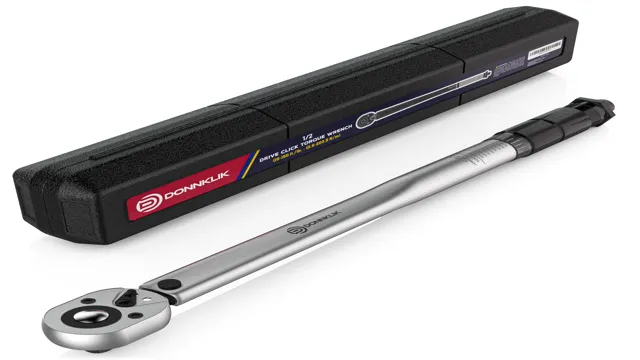How to Calibrate a Digital Torque Wrench: A Step-By-Step Guide

Digital torque wrenches are essential tools when it comes to precision and accuracy in fastening tasks. However, just like any other tool, digital torque wrenches need regular calibration to ensure that they provide accurate readings. Calibration is the process of adjusting your digital torque wrench to ensure that its readings conform to a known standard.
But, how do you calibrate your digital torque wrench? In this step-by-step guide, we unveil everything you need to know about calibrating your digital torque wrench. Whether you are a seasoned mechanic or a DIY enthusiast, this guide is for you. Keep reading to learn more!
What is Torque Calibration?
Calibrating a digital torque wrench is a crucial step to ensure accuracy and reliability when tightening bolts and nuts. Torque calibration involves verifying and adjusting the torque output of the wrench to match a known standard. To calibrate a digital torque wrench, you will need a torque standard, a torque analyzer, and a computerized calibration system.
The first step is to set up the torque standard and clamp the torque analyzer onto it. Then, connect the torque analyzer to the calibration system and follow the prompts to complete the calibration process. The process may involve applying torque in both clockwise and counterclockwise directions at different torque levels.
After completing the calibration process, the calibration data should be recorded and the torque wrench recalibrated regularly to maintain accuracy. Investing time to calibrate your digital torque wrench ensures precise torque outcomes and reduces the potential risks of safety hazards or damage to components as a result of improper torque application.
Definition of Torque Calibration and its Importance
Torque calibration is the process of ensuring that torque-measuring devices are accurate and precise. This involves comparing the measurement readings of a torque sensor to a known reference torque source, such as a calibrated torque wrench or torque standard. The goal of torque calibration is to minimize measurement errors and maintain the quality of torque-related processes.
Torque calibration is crucial in many industries that rely on accurate torque measurements, such as manufacturing, automotive, aviation, and construction. An incorrectly calibrated torque tool can lead to costly rework, equipment damage, or even safety hazards. Therefore, torque calibration should be performed regularly and by certified professionals.
In summary, torque calibration is an essential aspect of maintaining quality and efficiency in torque-related applications. It ensures that torque tools, whether manual or automated, are reliable and accurate, and prevent any undesirable outcomes that may arise from using uncalibrated tools.

Understanding Digital Torque Wrench Calibration
Calibrating a digital torque wrench is an essential task that ensures the accuracy and reliability of the tool. To begin with, you need to understand the importance of calibrating a torque wrench regularly. Regardless of how high-quality your wrench may be, it can eventually lose precision if not calibrated correctly.
Calibration ensures that your wrench is providing accurate readings, which is crucial to your work’s outcome and safety. The process involved in calibrating digital torque wrenches is relatively straightforward. It typically involves adjusting the wrench to a known torque standard and checking its accuracy against that standard.
Most digital wrenches come with their calibration instructions, which you must follow carefully. Once calibrated, you can use your wrench in confidence that it is delivering precise readings. Remember, regular calibration is key to maintaining the accuracy of your digital torque wrench.
How Digital Torque Wrenches Work and Why Calibration is Necessary
Digital torque wrenches are essential tools used for tightening bolts, nuts, and various fasteners in mechanical work. These wrenches function using the principle of torque, which is the measure of turning force applied to an object. The digital aspect of the wrench indicates the electronic display, which shows the level of torque applied.
However, calibrating the digital torque wrench is crucial to ensure accurate readings and prevent over-tightening or under-tightening. Calibration refers to adjusting the reading of the wrench to match a standard value. Calibration is necessary because the wrench’s accuracy can be thrown off by factors such as age, wear and tear, or exposure to harsh conditions.
Calibration ensures that the wrench produces reliable outputs, making it an indispensable tool in mechanical work. Neglecting calibration can lead to costly errors and repairs, making it crucial to schedule regular calibration of the digital torque wrench. Therefore, always remember to calibrate your digital torque wrench to avoid costly errors and ensure smooth mechanical operations.
Tools and Equipment Required for Calibration
If you’re wondering how to calibrate a digital torque wrench, it’s important to note that you will need a few key tools and equipment. Firstly, you’ll need a certified torque tester that will help you measure the accuracy of your wrench. Secondly, a calibration fixture or transducer is required to connect your wrench to the tester.
This tool will ensure that the torque applied by the wrench is being accurately measured by the tester. Additionally, it’s essential to have a digital display that will show you the actual torque value that is measured by the tester. Finally, make sure to have a good set of sockets that fit the calibration fixture or transducer properly.
These tools and equipment are necessary to ensure that your digital torque wrench is calibrated accurately. Remember that using an uncalibrated torque wrench can lead to inaccurate torque readings, which can impact the performance of your equipment and put safety at risk.
List of Tools Necessary for Calibration Process
Calibration process can only produce accurate results if the right tools and equipment are used. Here are some of the essential tools needed for calibration: Standard reference equipment – these are devices that are used to set the standard for measuring other devices.
Examples include voltage calibrators, temperature sensors, and pressure gauges. Calibration software – this is important for automation and data collection during calibration.
It helps to ensure that the process is done accurately and efficiently. Calibration labels – these are important to keep track of the calibration status of equipment.
They can be used to indicate when calibration is due or when it was last done. Torque wrenches – these are used for tightening bolts and nuts to a specified torque.
They are important in ensuring that equipment is properly secured. Multimeters – these are used for measuring voltage and resistance.
They are important for calibrating electronic equipment. Oscilloscopes – these are used for measuring and analyzing electronic signals.
Step-by-Step Guide to Calibrating Your Digital Torque Wrench
If you want to ensure your digital torque wrench provides accurate readings every time, it’s important to calibrate it regularly. Here’s a step-by-step guide on how to calibrate a digital torque wrench: Step 1: Set up your torque wrench calibration equipment according to the instructions provided by the manufacturer. Step 2: Consult your digital torque wrench instruction manual to find out its accuracy tolerance.
This will give you an idea of the acceptable range for your torque wrench readings. Step 3: Set your torque wrench to its lowest setting and take a reading. Adjust the setting until it falls within the acceptable range according to the tolerance indicated in the manual.
Step 4: Repeat this process for higher torque settings on your wrench. Step 5: Once you’ve calibrated your wrench, double-check your calibration by starting back at the lowest setting and working your way up to the highest setting again. Remember that calibration is not a one-time task.
To ensure the accuracy and reliability of your digital torque wrench, it’s essential to calibrate it regularly, at least once a year or as recommended by the manufacturer. By following these simple steps, you can be confident that your digital torque wrench is giving you accurate readings every time.
Step 1: Prepare Your Torque Wrench for Calibration
Calibrating your digital torque wrench is an important process that ensures accuracy and precision during your work. Before diving into the calibration process, you’ll need to prepare your torque wrench appropriately. Start by cleaning the wrench of any debris and verifying that all nuts, bolts, and screws are tightly secured.
Then, check your manufacturer’s instructions to identify any specific requirements for preparation, such as a warm-up time or specific handling instructions. Once you’ve completed these steps, you’re ready to move on to the calibration process itself. With proper preparation, you’ll be on your way to a more reliable and accurate digital torque wrench.
Step 2: Set the Torque Wrench to Zero or Its Lowest Setting
When it comes to calibrating your digital torque wrench, setting it to zero or its lowest level is a crucial step to ensure accurate readings. This step is necessary because torque wrenches often lose their calibration over time, and setting it to zero eliminates any residual torque in the tool. To set your torque wrench to zero, first, loosen the locking nut on the handle.
Next, turn the torque wrench’s adjustment knob counterclockwise until it reaches zero or its lowest setting. Once you’ve done this, make sure to tighten the locking nut securely to prevent any changes in the settings. It’s important to note that each torque wrench is different, so make sure to check the manufacturer’s instructions for the specific steps on how to set your torque wrench to zero.
By taking the time to calibrate your digital torque wrench correctly, you can ensure that your measurements are precise and avoid any potential safety risks in the future.
Step 3: Apply a Known Torque to the Torque Wrench
Calibrating your digital torque wrench is an essential step in ensuring its accuracy and reliability. The third step in this process is to apply a known torque to the torque wrench. This allows you to verify that the wrench is measuring torque correctly.
To do this, you’ll need a torque tester or a calibration machine, which are specifically designed to calibrate torque wrenches. Follow the instructions provided by the manufacturer of the torque tester or calibration machine, and apply torque to the wrench in small increments until you reach the desired torque level. Once you’ve applied the known torque, verify that the torque wrench is displaying the correct value.
If it’s not, you may need to adjust or re-calibrate the wrench. Repeat this step for different torque levels to ensure that your torque wrench is accurate throughout its range. Remember, proper calibration of your torque wrench is crucial for accurate and precise torque measurement.
Step 4: Check the Indication on the Torque Wrench
When it comes to the proper calibration of your digital torque wrench, the last step is to check the indication on the torque wrench. This is essential for ensuring that your readings are accurate and consistent. To do this, set your torque wrench to the desired torque setting and apply tension to the fastener, making sure that you keep everything steady and aligned.
As you do this, keep an eye on the display screen of your wrench, which should indicate that the torque value has been met. If it does not, then you need to make some adjustments to your wrench until you reach the desired value. This is why it is important to calibrate your digital torque wrench regularly, as it ensures that you get the most accurate and reliable readings each time you use it.
Remember to test your torque wrench regularly by applying a known force and again adjusting it if necessary. By doing so, you can ensure that your wrench is always ready to go whenever you need it, and that it will deliver reliable and consistent results every time.
Step 5: Adjust the Torque Wrench if Necessary
Once you’ve taken all the necessary steps to set up your digital torque wrench, including zeroing it out and selecting the desired torque setting, it’s important to make sure that the readings you’re getting are accurate. If there is any doubt, you’ll need to calibrate your wrench. Thankfully, doing so is simple and straightforward.
First, place your torque wrench in a calibrated torque tester, which will allow you to calculate the deviation from the reading on the wrench. Once you have a reading from the tester, compare it to the reading on your wrench. If they differ, use the adjustment features on your wrench to bring the reading in line with the tester’s reading.
Once you’ve made the necessary adjustments, check the readings again to ensure that they match up. This process may seem daunting at first, but calibration is crucial to ensure that your torque wrench is functioning properly and that the readings you’re getting are accurate, preventing errors down the line.
Step 6: Verify the Calibration
After completing the calibration process of your digital torque wrench, it’s time to verify the accuracy of your tool. To do this, you can use a torque tester or a torque analyzer that is specifically designed for testing torque wrenches. Firstly, set your torque tester to the desired torque level and connect it to your digital torque wrench.
Then, apply force in a clockwise or counterclockwise direction, depending on your calibration settings, and check the displayed values on both the torque tester and your torque wrench. If the readings match within an acceptable range, your digital torque wrench is now adequately calibrated and ready to use. But, keep in mind that calibration can drift over time, especially if you use your tool frequently.
So, it’s essential to recalibrate it periodically to maintain its accuracy. In conclusion, verifying the calibration of your digital torque wrench is a crucial step to ensure that your tool is providing precise torque readings at all times, rendering accurate results and avoiding any potential mishap.
Conclusion and Final Thoughts
In conclusion, calibrating a digital torque wrench is essential to ensure accurate measurements and prevent faulty results. Just like tuning a guitar, calibrating a torque wrench takes precision and attention to detail. By following these steps, you’ll be able to fine-tune your wrench to perform at its best, and eliminate any doubts about the accuracy of your readings.
Keep in mind, a correctly calibrated wrench leads to a tighter grip on life’s challenges, both figuratively and literally! So, go ahead and calibrate your torque wrench with confidence, and let nothing stop you from achieving the perfect tightness every time.”
Summary of Key Takeaways and Best Practices
Calibrating Your Digital Torque Wrench Calibrating your digital torque wrench is essential to ensure it provides accurate readings and maintains its precision over time. Here is a step-by-step guide that will help you calibrate your digital torque wrench. First, identify the correct torque value you need to calibrate your wrench to.
Next, set your wrench to the lowest value and apply it to a calibration device, such as a torque tester or a torque analyser. Proceed to adjust the wrench until it reaches the desired torque value. Repeat this process for the other torque values you require.
It is important to maintain your wrench regularly by cleaning it and storing it in a safe and dry place. This will extend the life of your digital torque wrench and ensure it continues to provide accurate readings. Store it away from extreme temperatures such as heat, cold, or moisture.
In addition, make sure you perform regular calibration checks to ensure that your wrench remains accurate. This can be done by comparing the readings on your wrench with a known calibrated device, such as a torque analyser. If there is a variance in the readings, adjust your wrench to ensure it provides accurate readings.
By following these steps, you can ensure that your digital torque wrench remains accurate and provides reliable readings. Remember to take good care of your wrench and perform regular calibration checks to ensure it continues to function as intended.
FAQs
What is a digital torque wrench?
A digital torque wrench is a type of tool used to measure and apply torque to fasteners, bolts, and nuts.
Why should I calibrate my digital torque wrench?
Calibrating your digital torque wrench ensures that it is providing accurate and consistent readings, which is crucial for precise torque applications.
How often should I calibrate my digital torque wrench?
It is recommended to calibrate your digital torque wrench annually or after 5,000 uses, whichever comes first.
Can I calibrate my digital torque wrench myself?
Some digital torque wrenches come with a calibration feature and instructions, but it is recommended to have it professionally calibrated by a certified technician.
What happens if I don’t calibrate my digital torque wrench?
If you don’t calibrate your digital torque wrench regularly, it may provide inaccurate readings, which can lead to overtightening or undertightening of fasteners and potentially cause damage or failure.
How do I know if my digital torque wrench needs recalibration?
If you notice inconsistent readings or a significant deviation from the manufacturer’s specifications, it may be time to recalibrate your digital torque wrench.
Can I use my digital torque wrench straight out of the box, or does it need to be calibrated first?
It is recommended to calibrate your digital torque wrench before its first use to ensure accurate readings.

